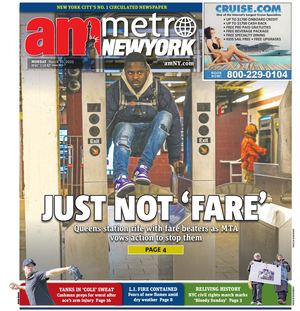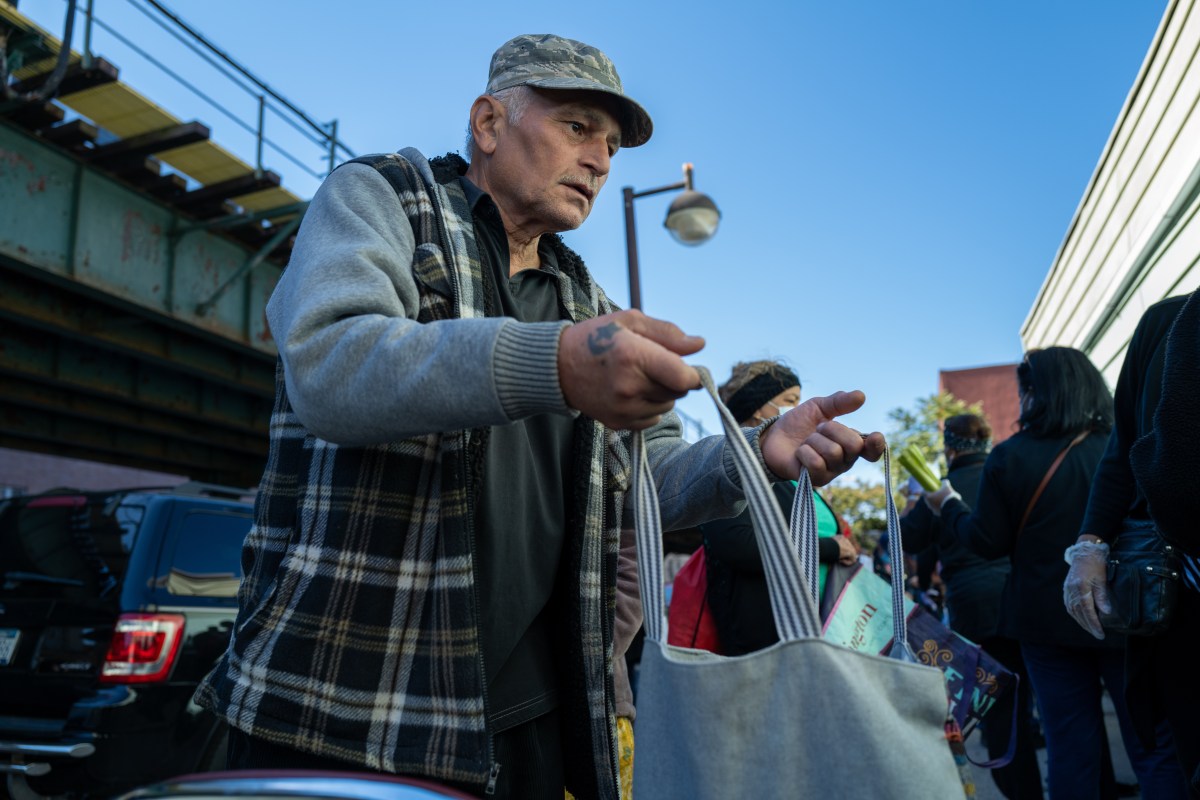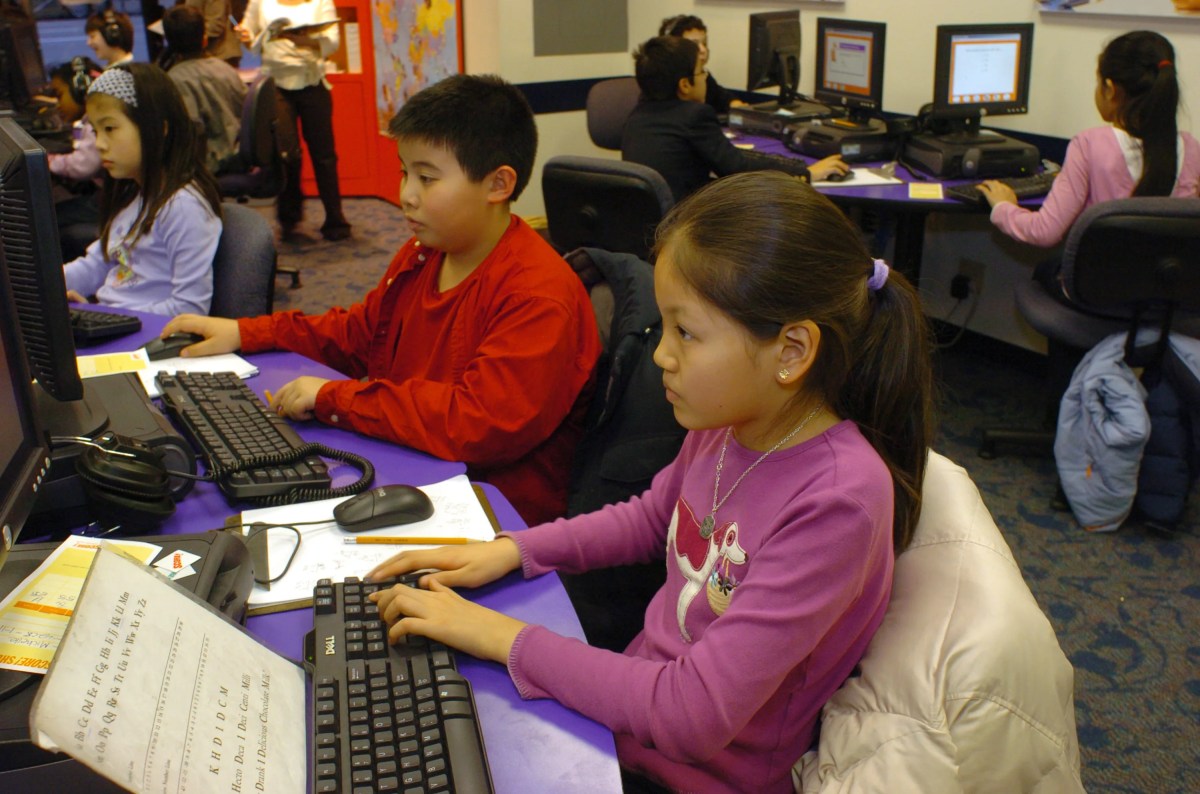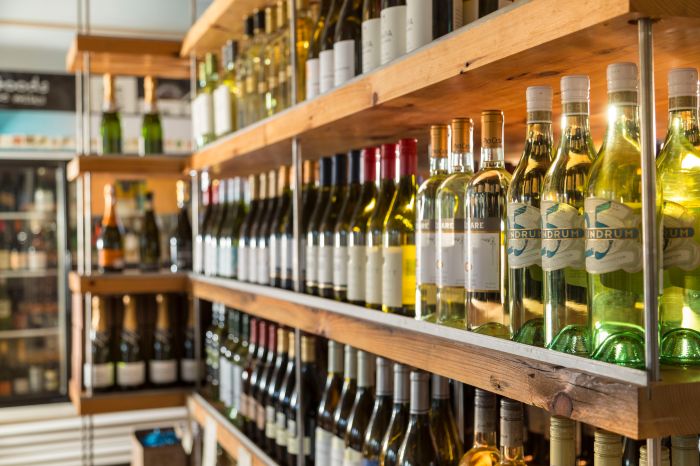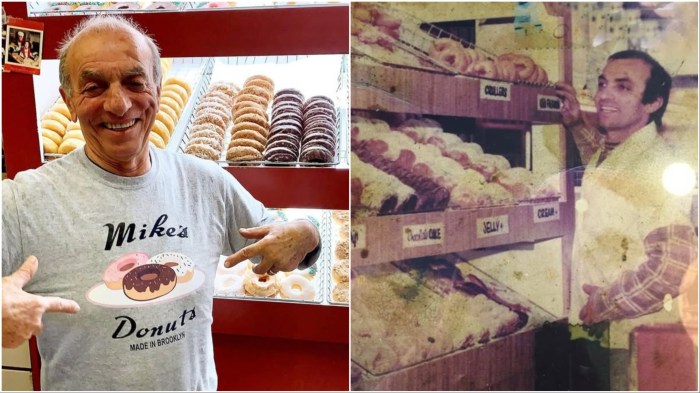Less than three weeks into his second term, President Donald Trump’s numerous executive orders have sparked anxiety and stress for many New Yorkers.
Whether it was the tariffs that lasted in less than 24 hours or the freezing of the federal assistance grants and loans, which would have affected Medicare, New Yorkers have been wondering what these executive orders could do to the cost of food, which is already high for many.
More than 400 food pantries in New York City are particularly concerned about the rapid changes coming from Washington, DC. These pantries have been watching the news carefully, knowing how quickly anything could change how they serve those facing food insecurity.
“We’re always, at this stage of our world, very, very anxious about what a quick turn could be,” says Davon Russell, the President of the Women’s Housing and Economic Development Co. (WHEDco) a social service agency that primarily serves the Bronx and gives out 1,600 meals per week. “The President may issue an executive order, and then the courts have to come in and rule, and in the interim, you’re either left in limbo, or you have to take real independent action.”
Russell adds that other factors are impacting WHEDco’s food pantry. They include the price of eggs due to bird flu and rising utility bills, such as ConEdison’s recently announcing rate hikes. He also says many visitors to WHEDco’s pantry work full-time but still do not make enough to pay for groceries, hence the need for SNAP benefits, an issue Russell is most concerned with.
A ‘SNAP’ decision that could prove costly
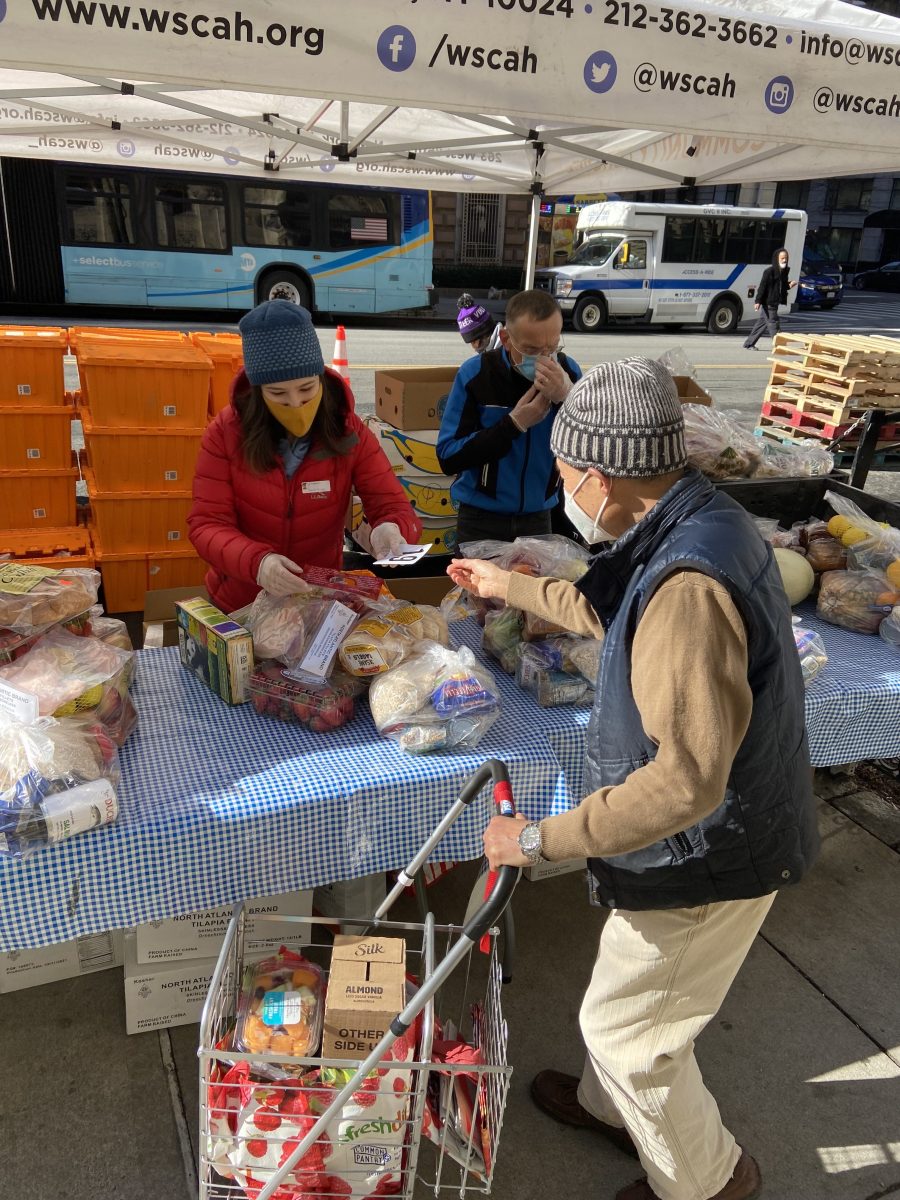
Nearly 2 million New Yorkers rely on SNAP to provide food, but House Republicans may cut or reduce benefits during this March’s federal budget planning.
Greg Silverman, the CEO and Executive Director of the West Side Campaign Against Hunger, also discussed the consequences of cutting or reducing SNAP benefits.
“If that got cut, that would really affect a lot of our customers and increase their need in terms of pantry and fresh fruits and vegetables,” he says. “So that could really, that could really balloon our pantry program because it’s just all grocery cost in the end.”
The increased need for emergency food assistance during the COVID-19 pandemic when demand skyrocketed. But those numbers have barely declined in the last couple of years. According to the Robin Hood Foundation, in 2023, nearly a third of adults have experienced food security, along with 44% of NYC families with children. As of 2022, NYC has a poverty rate twice the national average. With the added threat coming from the federal level, the teams running NYC’s food pantries have been asking and analyzing what they must do when hardship strikes.
WSCAH saw 18% less customers at their 86th street location in January compared to last year. Although it is uncertain why there is a decline, worries over ICE enforcement could be a factor.
“We would think that there are a number of programs that could be at risk,” says Kieran Harrington, the CEO of Riseboro, which operates in Central Brooklyn. “We’re concerned about our ability to continue to serve when we consider the farmers markets that we operate, and particularly a focus on food, food that is sourced in the community and served for this community. We’re concerned about, will those fund? Will that funding still be available to allow that those programs to kind of continue to take shape and to form? And most importantly, we’re very concerned about our food pantry initiatives.”
Alternatives with funding cuts
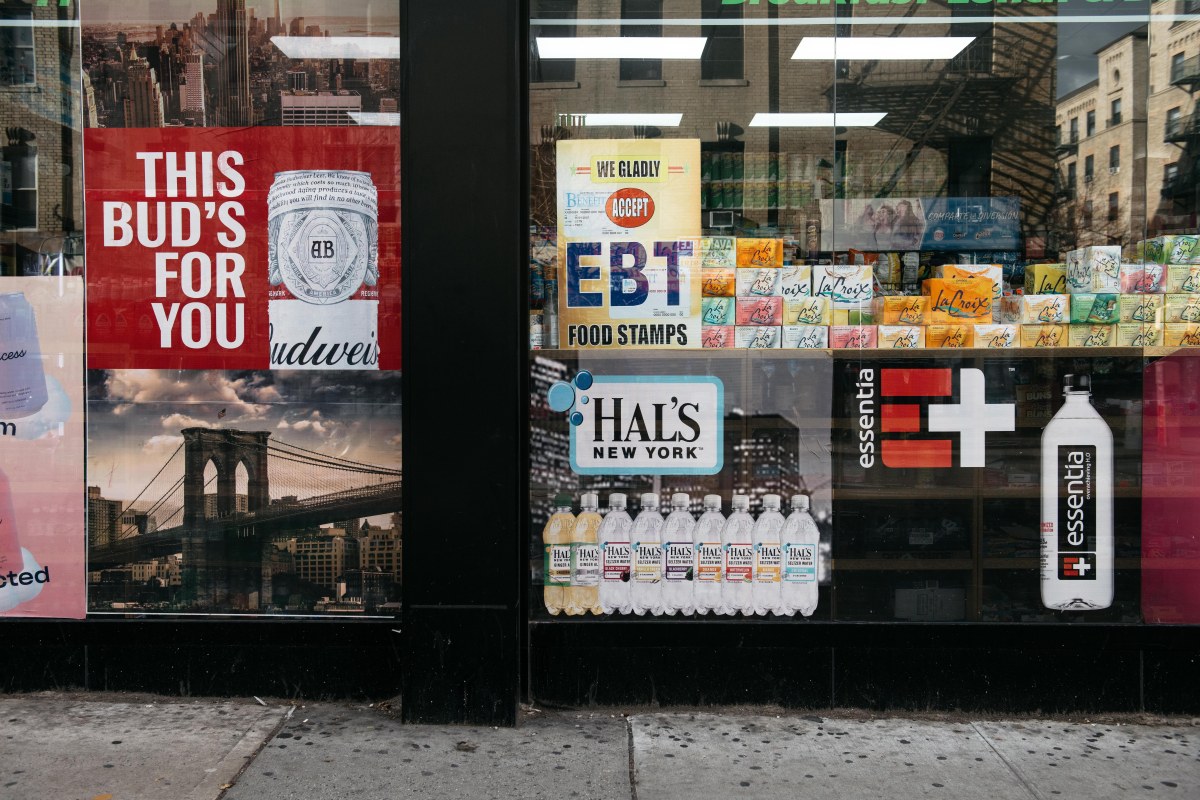
So what will these pantries do if federal funding to the state and city declines, tariffs are used again, SNAP benefits are cut or reduced, or anything else that could hurt their ability to serve those in need?
Harrington says Riseboro works closely with partners, such as the Park Slope Food Coop. Some donors get food from Trader Joe’s and Whole Foods, and the nonprofit receives food grant money from Ace and Driscoll and even some government funding.
Even Russell points out how connected public funding can be, which impacts food pantries like dominoes.
“I think we have two sources of funding for food that begin at the federal level, USDA, down to the state, down to New York City and to us,” he says. “So it’s never isolated. The money comes from the top, the state or the city may decide to enhance it based on its priorities. But there is emergency food assistance that comes from a USDA-led initiative, and then comes down to New York City, to HRA. So it’s always connected.”
Russell adds that if the federal government is not going to provide any assistance, then the state and city would have to do more than they usually do.
However, as Harrington says, there is concern that those two government levels will be limited in terms of resources. One alternative would be donations from individuals or a food drive, but that is also not an easy solution.
“We live in a place where there are a lot of people with a lot of different concerns, a lot of different presenting issues that are not easily solved,” he says. “The city that demands that you know that we move quickly and decisively. It sometimes is possible for us not to see in our neighbor their need.”
Russell agrees. “Your average New Yorker is walking around, busy doing the New York thing. They’re not connected to all of what you’re asking about; what moves? Oh yeah, pantry. People go for food, and now they’re not going. So what do they do? And then, if the pantry loses funding. What does the pantry do?”
‘Staring down the barrel of a gun’
NYC’s food pantries continue to provide food for those in need. The team at WHEDco tries to practice self-care so they will not be stressed out when serving their communities. No nonprofit knows what tomorrow will bring no more than anyone else in New York, and like everyone, they keep doing their work while listening for significant announcements that could quickly change their pantries.
“We plan as best we can; we never know what’s going to happen,” says Silverman.”I don’t really see any decrease in the people that will come to our door. And we’ve really built up our system to handle the number of people that are coming to us, so I don’t have concerns that we’ll be able to meet the need. We always have concerns over funding, and we’ll continue to monitor that and communicate our needs to both local officials and to foundations and individual funders that historically show up for us.”
While tariffs are expected to drive prices higher in NYC, it is not yet definite whether they will happen and impact such an anticipated level.
But what Harrington and Russell are anticipating is the future of SNAP benefits, and changes are already happening. Riseboro reports an increase in visitors since December because their pantry gives out eggs and also because some visitors have already lost their SNAP benefits.
Russell says WHEDco is expecting the same.
“We’re staring down the barrel of a gun here on this,” he says. “There’s going to be a new bill that governs the next fiscal year coming up, and that’s is what is being threatened, if all that comes to fruition, then we’re in real, real trouble.”
Updated on Feb. 8, 2025.
Read More: https://www.amny.com/lifestyle/health/
